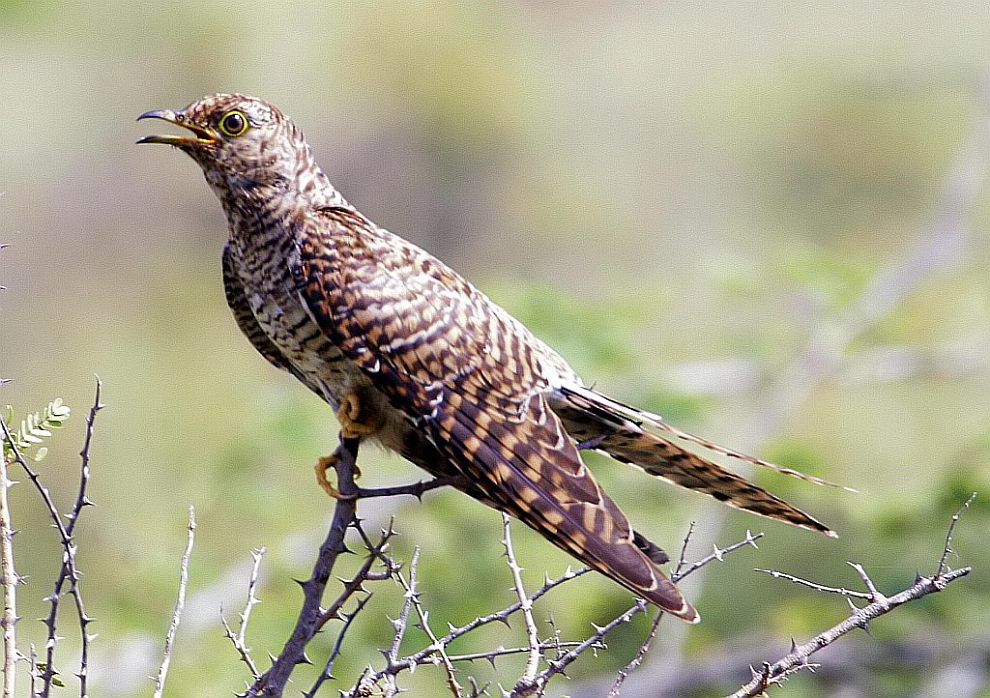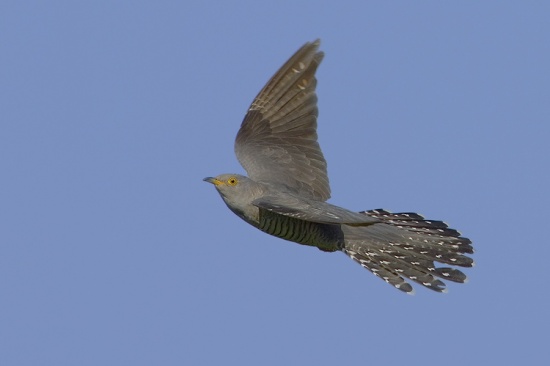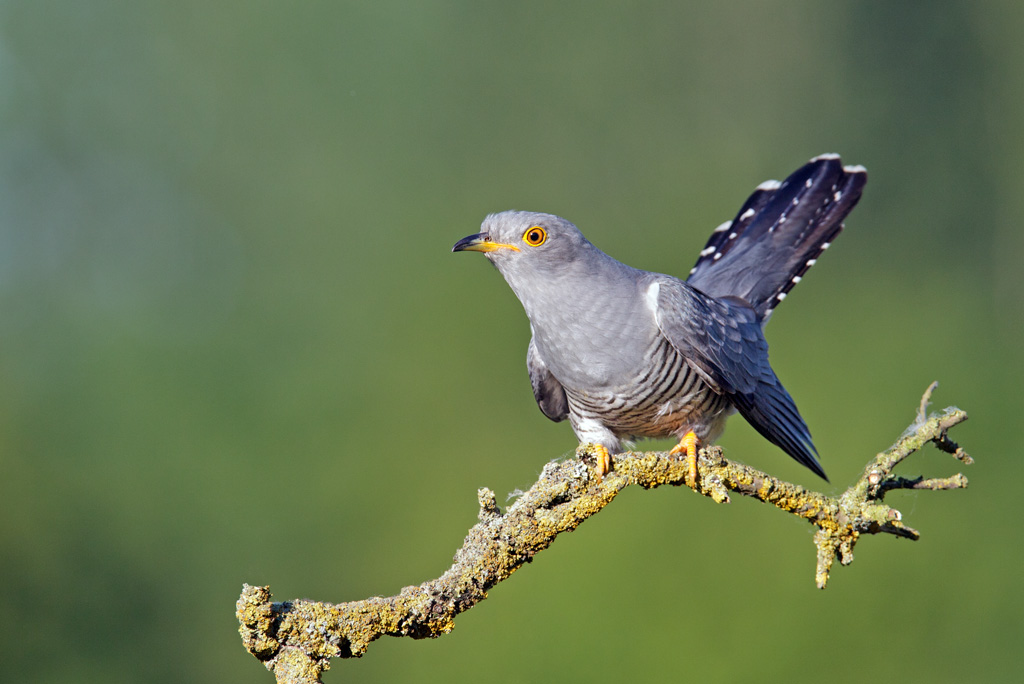
Cuculus canorus
SUBFAMILY
Cuculinae
TAXONOMY
Cuculus canorus Linnaeus, 1758, Sweden. Four subspecies recognized.
OTHER COMMON NAMES
French: Coucou gris; German: Kuckuck; Spanish: Cuco
Comъn.
PHYSICAL CHARACTERISTICS
12.6–13 in (32–33 cm), 0.23 lb (115 g). Males dark gray above,
tail blackish brown, spotted and tipped with white, unevenly
barred black. Gray to white underparts, eye ring yellow, iris
brown to orange, bill black. Females similar, although rufous
on upper breast; females of canorus subspecies occur in a rufous
(hepatic) morph.
DISTRIBUTION
Europe and Asia, from Iberian Peninsula and North Africa to
Siberia, Kamchatka, and Japan. Winters in southern Africa and
southern Asia.
HABITAT
Forests and woodlands, open wooded areas, steppes, meadows,
and reedbeds.
BEHAVIOR
Males sing a loud “cuck-oo” in spring, silent in winter. Migratory
in northern part of the
DISTRIBUTION
range.
FEEDING ECOLOGY AND DIET
Mainly caterpillars, and other insects such as dragonflies, crickets,
beetles. Prey on eggs and nestlings of songbirds.
REPRODUCTIVE BIOLOGY
Solitary most of the time, both females and males have multiple
partners, but no clear social relationships. Brood parasitic;
over 120 hosts, eggs are polymorphic, resembling the eggs of
the different hosts. Incubation 12 days, nestlings evict host
eggs and chicks; nestling period around 18 days. Fledgling
fed by foster parents for two or three weeks after leaving the
nest.
CONSERVATION STATUS
Not globally threatened. Common and vocally conspicuous
(but difficult to see) throughout its range.
SIGNIFICANCE TO HUMANS
None known.
Other popular Animals
Photo Gallery of - Common cuckoo




 Animalia Life
Animalia Life